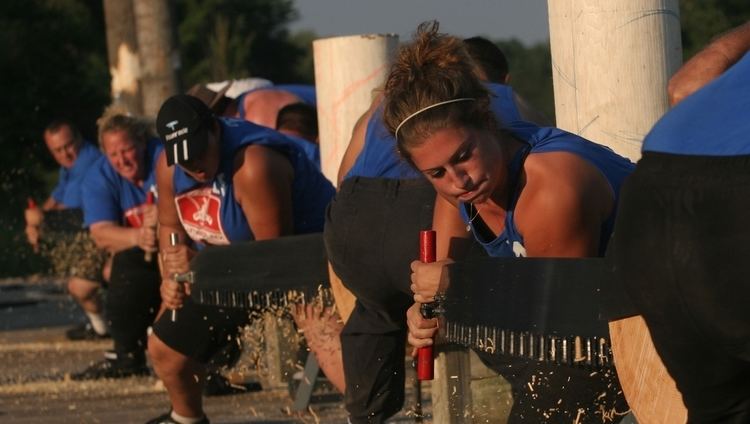Paralympic Yes | Olympic No | |
 | ||
The caber toss is a traditional Scottish athletic event in which competitors toss a large tapered pole called a "caber". It is normally practised at the Scottish Highland Games. In Scotland the caber is usually made from a Larch tree and is typically 19 feet 6 inches (5.94 m) tall and weighs 175 pounds (79 kg). The term "caber" derives from the Gaelic word "cabar" or "kaber" which refers to a wooden beam.
Contents
The person tossing the caber is called a "tosser" or a "thrower".
It is said to have developed from the need to toss logs across narrow chasms (in order to cross them), lumberjacks needing to transport logs by throwing them in streams, or by lumberjacks challenging each other to a small contest.
The record for most caber tosses in 3 minutes is currently held jointly by Kevin Fast and Warren Trask (both Canadian). They managed to perform 11 successful caber tosses on 6 September 2014 at the Trenton Irish Scottish festival in Ontario Canada.
Objective and technique
The primary objective is to toss the caber so that it turns end over end, falling away from the tosser. Ideally it should fall directly away from the tosser in the "12 o'clock" position. The distance thrown is unimportant.
The tosser balances the caber upright, tapered end downwards, against his or her shoulder and neck; the caber being supported by stewards or fellow-competitors while being placed into position. The tosser then crouches, sliding his interlocked hands down the caber and under the rounded base, and lifts it in his cupped hands. On standing he must balance the caber upright - no easy feat with the heavier end at the top, and less-experienced tossers may be unable to stop the caber falling to one side after lifting it. The tosser then walks or runs a few paces forward to gain momentum, and flips the tapered end upwards so that the large end hits the ground first and - if well tossed - the caber falls directly away from the tosser.
Weight and strength are clearly essential for success, but technique is also important for balancing the caber when lifting it, and flipping up the held (tapered) end to promote a clean toss.
Scoring
The straightest end-over-end toss scores highest. If the caber lands on its end but falls back towards the thrower, the score is lower than for any end-over-end throw but is based upon the maximum vertical angle that the caber achieved (side-judging may involve a second judge).
